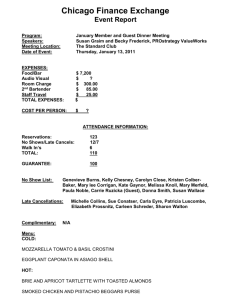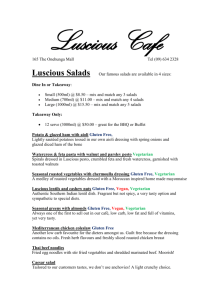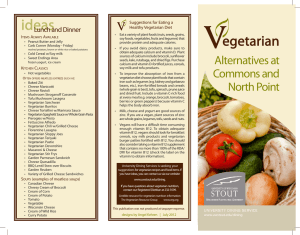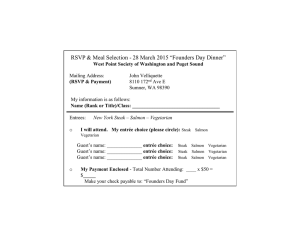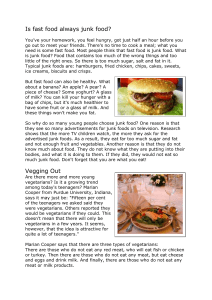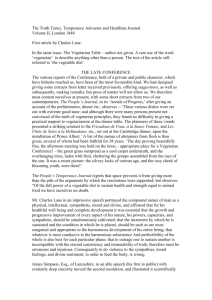Introduction to Core Skills Communication
advertisement
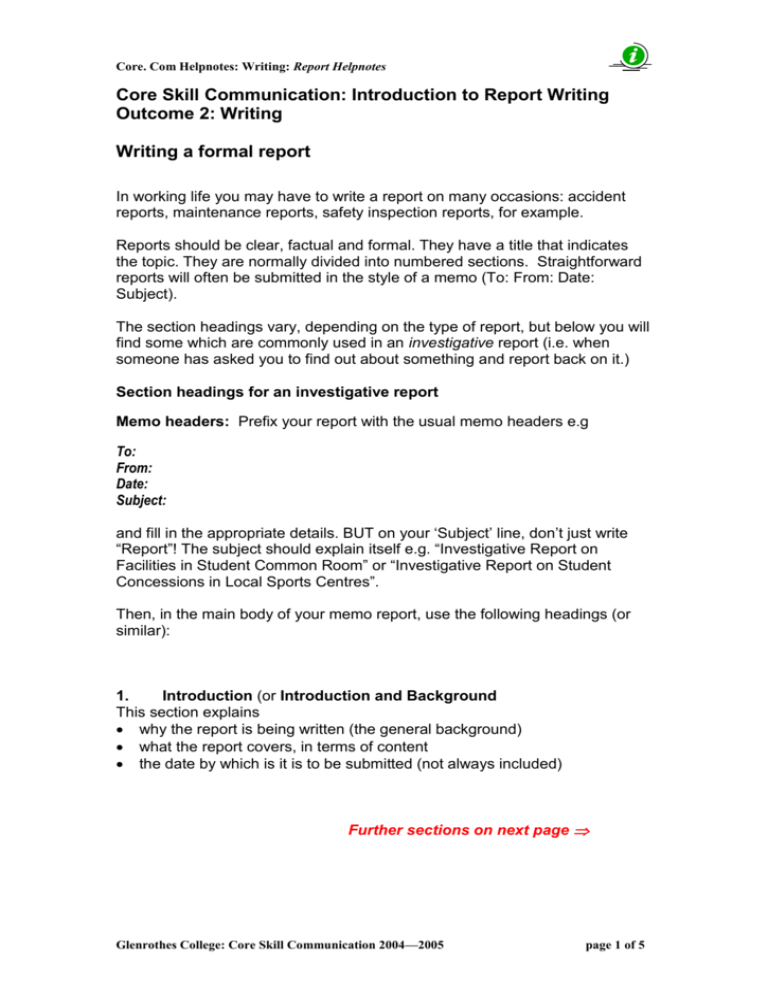
Core. Com Helpnotes: Writing: Report Helpnotes Core Skill Communication: Introduction to Report Writing Outcome 2: Writing Writing a formal report In working life you may have to write a report on many occasions: accident reports, maintenance reports, safety inspection reports, for example. Reports should be clear, factual and formal. They have a title that indicates the topic. They are normally divided into numbered sections. Straightforward reports will often be submitted in the style of a memo (To: From: Date: Subject). The section headings vary, depending on the type of report, but below you will find some which are commonly used in an investigative report (i.e. when someone has asked you to find out about something and report back on it.) Section headings for an investigative report Memo headers: Prefix your report with the usual memo headers e.g To: From: Date: Subject: and fill in the appropriate details. BUT on your ‘Subject’ line, don’t just write “Report”! The subject should explain itself e.g. “Investigative Report on Facilities in Student Common Room” or “Investigative Report on Student Concessions in Local Sports Centres”. Then, in the main body of your memo report, use the following headings (or similar): 1. Introduction (or Introduction and Background This section explains why the report is being written (the general background) what the report covers, in terms of content the date by which is it is to be submitted (not always included) Further sections on next page Glenrothes College: Core Skill Communication 2004—2005 page 1 of 5 Core. Com Helpnotes: Writing: Report Helpnotes 2. Procedure (or Method or Source of Information)1 This is an important section in an investigative report. It explains how the writer obtained the information that will follow. The procedures or methods might include any of the following: 2.1 2.2 2.3 2.4 2.5 Questionnaires Interviews Library research Observation Experiment 3. Findings (or Results) These are placed in logical order and may, if appropriate, correspond to the procedural steps i.e. the findings from the questionnaire would come first, then from the interviews etc. The section will probably be divided into numbered subsections. The Findings section includes only factual information – no conclusions or opinions - yet. 4. Conclusions Look carefully at your findings and draw conclusions about what they show. You have to do this, so far as possible, in an unbiased way, leaving out your personal prejudices and feelings. No new information should be introduced here. If there are several conclusions, number them separately. 5. Recommendations Sometimes you are asked to make recommendation(s) on your findings i.e. to suggest action that could be taken. Your recommendation (there may be more than one) should follow logically from your conclusions and be based on the evidence - not simply your personal opinions. If your report is typed or word processed, you should initial or sign the very end, to authorise the fact that you wrote it. 1 Sometimes the procedures for gathering information may be described under the Introduction heading – especially if the report findings are all based on personal experience e.g. a visit to a Fish Factory. Glenrothes College: Core Skill Communication 2004—2005 page 2 of 5 Core. Com Helpnotes: Writing: Report Helpnotes Getting ready to write your report Purpose Find out exactly what you’ve been asked to do and make sure you understand it Make sure you know why the report is being written (if the purpose is to recommend how to spend £3,000 on office equipment and your report fails to make a recommendation, it will not be doing what it should be doing) Reader Make sure you know your reader’s needs. How much does s/he already know? Don’t assume knowledge. Beware of using jargon. Your material Collect facts and ideas about your subject by experiment, observation, reading, survey and/or interview. Beware! This may be a bigger job than the actual writing of the report. Don’t be too ambitious. Formal style Keep the language formal. That means, as with business letters, no contractions and no colloquialisms (e.g. do not not don’t; and many not lots). Notice the style of this handout which does include contractions and colloquialisms: this is because it’s informal and meant to sound friendly. A report is less chatty. In general, your word choice should be impersonal, unless it’s a very personal report (on your own experience in a class, for example). This means avoiding using I or you. Write Ten people were asked for their opinion rather than I asked them, ‘What did you think about it?’ You’re aiming for a formal, not a conversational style. Write Results were as follows rather than Some people seemed to agree but others hadn’t a clue. On the next page, you’ll find an example of a short, formal investigative report: Glenrothes College: Core Skill Communication 2004—2005 page 3 of 5 Core. Com Helpnotes: Writing: Report Helpnotes To: From: Date: Subject: Elspeth Laing, Communication Tutor Sidney Expert, Student 15 November 2001 Vegetarian Options in the College Cafeteria 1. Introduction and Background. At your request, an investigation into vegetarian options in the college cafeteria was carried out. This report outlines what is available, draws some conclusions about choice and variety, and makes recommendations for improvement. 2. 2.1. 2.2. 2.3. Procedures The menu and meals available in the college rotunda were examined. The counter staff were consulted. Two vegetarian students were interviewed. 3. 3.1. Findings The menu indicated that egg mayonnaise salad was the only suitable item for vegetarians: this salad consisted of egg mayonnaise, one tomato, four slices of cucumber and some lettuce. The cheese used in rolls and salads was not vegetarian cheese. There were six choices of hot meals for meat-eaters, as well as a range of meat salads. The counter staff indicated that they could make up mushroom omelettes or egg mayonnaise salad on request at any time. The vegetarian students felt that their choices in the cafeteria were extremely limited and that food labelling did not always adequately indicate whether meals were fully vegetarian or not. 3.2. 3.3. 4. Conclusions The options for vegetarians are not good. The menu only offers one rather unimaginative salad as a main meal and unless customers actually ask the counter assistants, there is no way of knowing that a hot vegetarian meal is available on request. The cafeteria is therefore clearly not geared to meeting the needs of vegetarians. 5. 5.1. 5.2. 5.3. Recommendations A wider choice of vegetarian options should be introduced. Vegetarian cheese should be used in some salads and these salads clearly marked as ‘vegetarian’. Macaroni cheese, which is often on the menu, should be made with vegetarian cheese so that this option would be open to both meat-eaters and vegetarians. [306 words] More help on next page Glenrothes College: Core Skill Communication 2004—2005 page 4 of 5 Core. Com Helpnotes: Writing: Report Helpnotes Report Writing: tips 1. Good presentation is essential. This means clear paragraphing headed sections underlined with a ruler effective use of space to make the page appealing to the eye, and easy to read. 2. Don’t forget the title. It must be clear and self-explanatory. 3. Make sure your introduction is suitably formal. It should explain the background, state your purpose and indicate what you intend to cover (i.e. scope of report). 4. Use a numbering system for your sections – and get it right (see example). Don’t go overboard by numbering every single line. 5. Spend time developing your feeling of appropriate style. It should sound fluent and easy, but not over familiar and not conversational. This means no contractions no slang no colloquial words or phrases like ‘a lot’, ‘really’, ‘’pretty good’ no familiar references to the reader: ‘You usually find that….’ 6. Don’t repeat yourself, either in content or in language. Be on the alert for over-using your favourite words e.g. ‘however’ five times on one page. 7. Get your punctuation right. 8. Don’t use exclamation marks!! They have no place in formal style, even if you like them. 9. Make sure you have a reliable method of checking common misspellings e.g. of/off to/too/two their/they’re/there were/where 10 Be a demon self-checker. Ruthlessly check your own work before the tutor gets her hands on it. Don’t lose heart if – after careful checking and much work – you find your report has come in for major red-pen attack. Learn from your errors and do another. A good sense of formal style is worth acquiring, but it doesn’t come overnight! Glenrothes College: Core Skill Communication 2004—2005 page 5 of 5
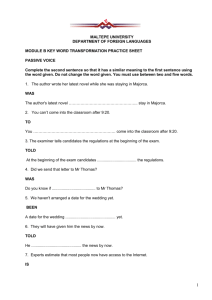
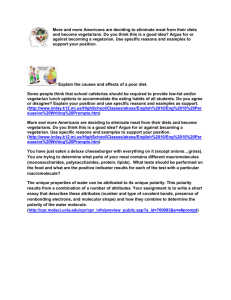
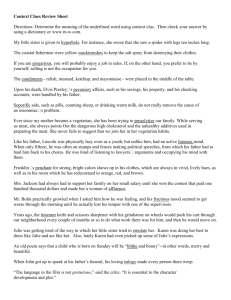
![Chiefly Sentimental [Doc]](http://s3.studylib.net/store/data/006648926_1-7a04bc5bf8639748b20cf9b3579105be-300x300.png)
